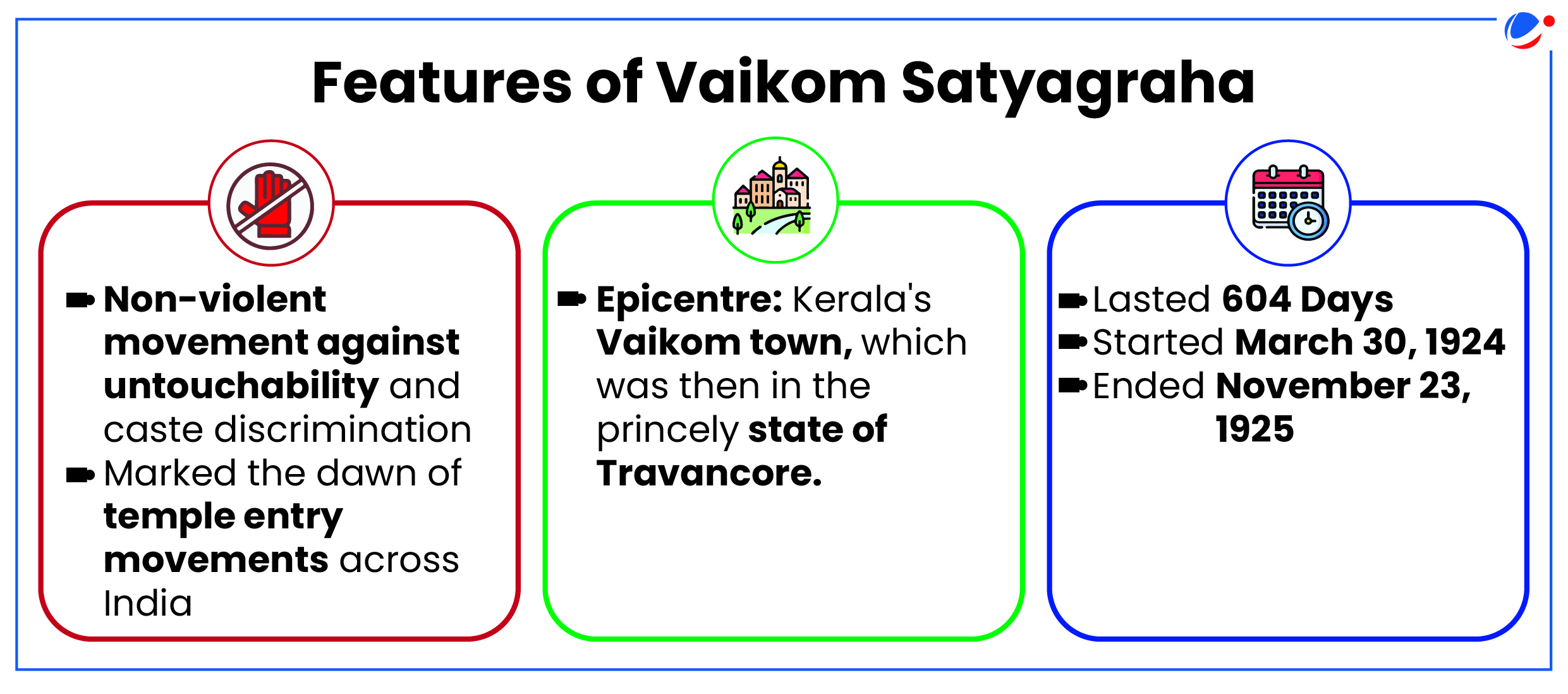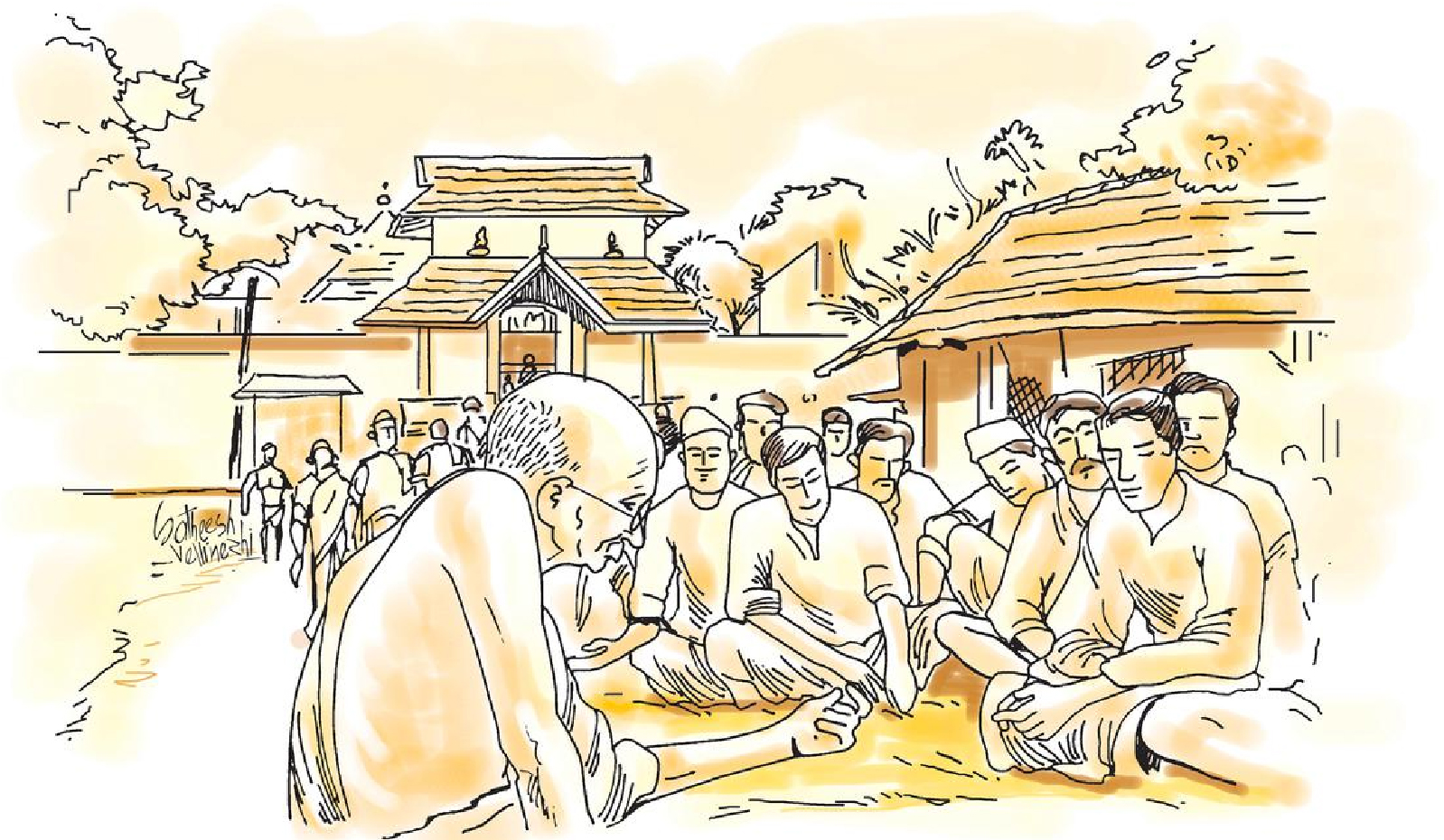Why in the News?
Recently, India celebrated the 100th anniversary of the Vaikom Satyagraha, a significant movement in Indian history that confronted untouchability and caste-based oppression.
About Vaikom Satyagraha

- It was a historic non-violent temple entry protest that began in Vaikom, a town in the princely state of Travancore (Kerala region), on March 30, 1924.
- It was in a response to the discriminatory exclusion of "lower caste" Hindus from accessing the Vaikom Mahadeva temple.
- Despite rise in the educational and economic status the lower caste community especially Ezhavas faced the social discrimination which eventually led to the agitation.
- Satyagrahis went in groups of three to enter the temple but were stopped and arrested by the police.
- Dressed in khadi and wearing khadi caps, Govinda Panikkar (Nair), Bahuleyan (Ezhava) and Kunjappu (Pulaya), defied the prohibitionary orders.
- The movement gained popularity throughout India and received support from various regions.
- The Akalis of Punjab provided food to the Satyagrahis.
- Christian and Muslim leaders also supported the movement
- The Vaikom Satyagraha was officially withdrawn on November 30, 1925 after consultations between Gandhi and W.H. Pitt, the then police commissioner of Travancore.
Associated Leaders & support
|
Outcome of Vaikom Satyagraha
- Legal Reforms & initiatives:
- The Satyagraha's pressure led to the Temple Entry Proclamation in 1936, a landmark legal victory granting access to lower-caste individuals into temples.
- It also led to initiatives like the establishment of the Travancore Public Service Commission to ensure fairness in government roles.
- Political Awakening: It catalysed political awareness and activism among marginalized communities.
- National Impact: The movement's resonance extended beyond Kerala, inspiring similar protests and campaigns across India against caste-based discrimination.
- Rift between Mahatma Gandhi and Periyar: The Vaikom Satyagraha brought open the rift between Gandhiji and Periyar.
- While Gandhiji saw it as Hindu reformist movement, Periyar called it a fight against caste-based atrocities.
- Periyar was not happy with the partial success attained (only 3 out 4 roads leading to the temple were open for all the castes), and he eventually quit Congress months later.
Other Anti-Caste Movements
Year | Movement | Leaders | Details |
|---|---|---|---|
1873 | Satyashodhak Movement | Jyotirao Phule | Emancipation of low castes, untouchables, and widows, Against Brahminic dominion |
1916 | Justice Party Movement | Dr. T.M Nair, P. Tyagaraja Chetti, C.N Mudalair | Against Brahminic control in government, education, and politics |
1924 | Depressed Classes Movement | BR Ambedkar | Upliftment of depressed classes, Against untouchability, published Marathi Newspaper titled Bahiskrit Bharat (1927) |
1925 | Self-Respect Movement | EV Ramaswami Naicker (Periyar) | Against caste system and Brahmin bias, Establishment of Kudi Arasu journal (1910) |




